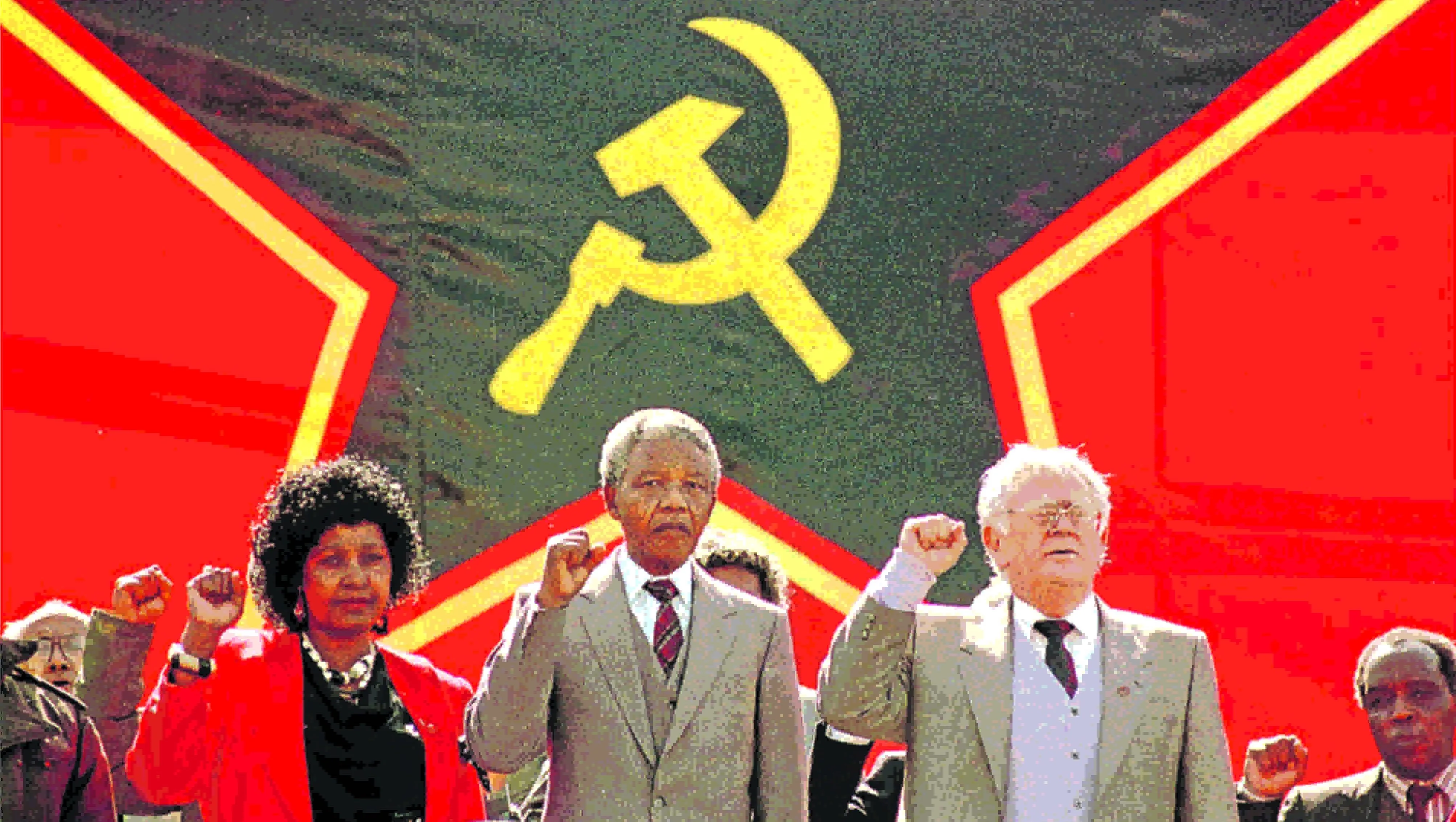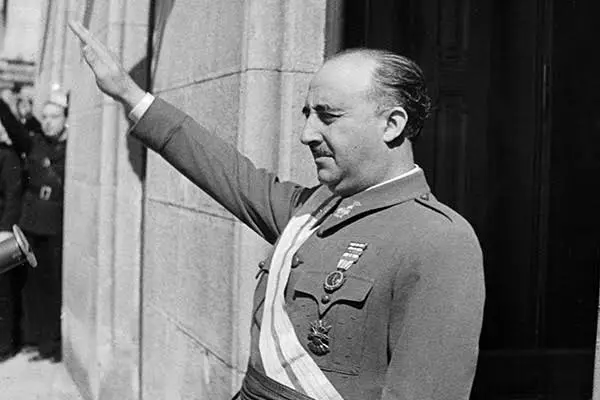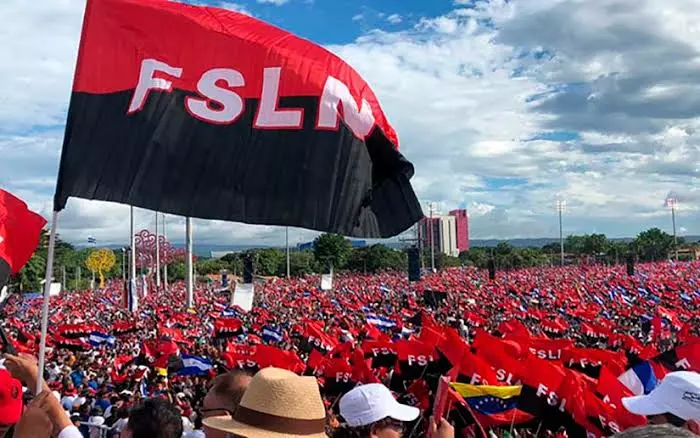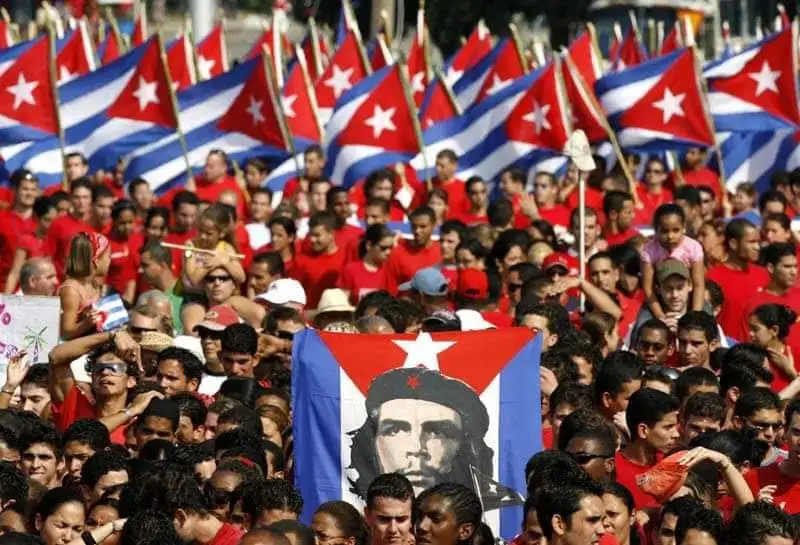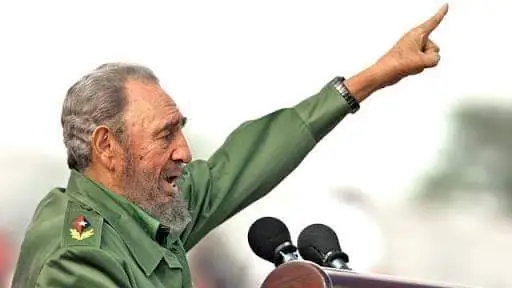In Part 1, we examined briefly the historical conditions in which the Communist Party of South Africa (CPSA) was established in 1921, by militant white workers following the First World War and the Great October Socialist Revolution. Then how, at its 3rd Conference in 1924, it decided to concentrate on recruiting the black majority — in the face of strong internal resistance.
For the decision to recruit the black working class to be made, we must thank the persistence of lawyer Sidney Percival (S.P.) Bunting (1873-1936) and the leader of the newly formed Young Communist League, Eddie Roux (1903-1966). But they did more than simply make a fine-sounding resolution at Conference; Bunting and Roux: YCL member Willie Kalk, a cabinet maker; and young Scotsman Jimmy Shields (1900-1949), who became CPSA General Secretary between 1925-1927, all spent time and effort in going out to recruit within the black community, speaking on street corners and knocking on doors. Stanley Silwana and Thomas Mbeki (C1900-C1941) became the first black members of the YCL, both of them becoming prominent trade union organisers.
We cannot ignore what happened to the white working-class during this period. Jan Smuts (1870-1950), an Afrikaner who had fought the British during the Anglo-Boer War (1899-1902) became Prime Minister between 1919-1924. Smuts had been very close to Louis Botha (1862-1919). Together, they played an important part in the agreements which led to the establishment of the Union of South Africa in 1910. They formed the South African Party and won the first national election with Botha becoming South Africa’s first
Prime Minister. The electorate was all white except for Cape Province and Natal in which a small number of Coloured and African property owners had voting rights. In 1914 Botha and Smuts supported the British Empire against Germany against the wishes of many Afrikaners who were pro-German. In 1915, the Boer hard-liners formed. the National Party led by former minister J.B.M. Hertzog. In the first South African government, Smuts held three positions simultaneously, the Ministries of Defence, Interior and Mines. In 1913, Smuts ruthlessly suppressed a white miners’ strike in which 23 miners were gunned down, and the following year suppressed a railway strike. Following the death of Botha, Smuts became Prime Minister in 1919, suppressing the white miners again in 1922 at the time of the Rand Revolt. This time around 200 people died, including the police. Four of the leaders were condemned to death, going to the gallows singing the ‘Red Flag’. Smuts was justifiably seen as the creature of the Chamber of Mines.

J.B.M. Herzog and his National Party formed an alliance with the South African Labour Party and with the assistance of organised white labour, won the election in 1924. What followed was known as the ‘Pact Government’.
As Prime Minister, Hertzog presided over the passage of a wide range of social and economic measures which did much to improve conditions for working-class whites: they did not, however, benefit the majority of South Africans, who found themselves the targets of discriminatory labour laws that entrenched white supremacy. A ‘Civilised Labour’ policy was pursued by the Pact Government to replace black workers with whites (typically impoverished Afrikaners) and was enforced through three key pieces of legislation.
1) The Industrial Conciliation Act (1924) created job reservations for whites while excluding blacks from membership of registered trade unions (which therefore prohibited the registration of black trade unions.)
2) The Minimum Wages Act (1925) gave the Minister for Labour the power to force employers to give preference to whites when hiring workers.
3) The Mines and Works Amendment Act (1926) reinforced the colour bar in the mining industry and excluded Indian miners from skilled jobs.
Following this legislation, the militancy of the white workers went into rapid decline.
By 1928, it is recorded that the CPSA had 1,750 members of whom 1,600 were Africans or Coloureds [please note that we use the term ‘Coloured’ in the sense used throughout southern Africa as referring to people of mixed race who form a distinct community].
Without any doubt, the recruit who was to play the most important historical role was Jimmy La Guma: James Arnold La Guma (1894-1961) was born in Cape Town to poor parents and orphaned at 5 years old. In 1919, La Guma joined the newly formed Industrial and Commercial Union (ICU) and became an efficient organiser. (In 1925, the ICU adopted a new constitution, changing its name to the Industrial and Commercial Workers Union of Africa — but was still known as the ICU.)
Jimmy La Guma became the ICU General Secretary and moved to its new Headquarters in Johannesburg early in 1926. Jimmy had joined the Communist Party in 1925 and during 1926 became a member of its Central Executive Committee.
In March 1926, La Guma came into conflict with Clements Kadalie (1896-1951), originally from Nyasaland (Malawi), Kadalie was the founder and leader of the ICU. But many, including La Guma, felt that Kadalie had begun making the Union into a business and neglecting the members. In December 1926, all Communists were expelled from the ICU, the three most important being Jimmy La Guma, General Secretary; E.J. Khaile, Financial Secretary (who had only been appointed earlier that year) and Johnny Gomas (1901-1979), Cape Provincial Secretary.
The ICU continued to grow after the expulsions, reaching a membership of about 150,000 a year later, but without the direction and dedication of the Communists, the union became badly affected by financial mismanagement and personal rivalry and disappeared completely during the 1930s.
Returning to Cape Town, Jimmy La Guma became both Chairman of the CPSA in Cape Town and Secretary of the Cape Town Branch of the ANC. In February 1927, the CPSA delegated La Guma to the Congress of the League Against Imperialism in Brussels, Belgium. He was accompanied by the ANC delegate, J.T. Gumede (1867-1946); after the Congress, Gumede went to Germany where he was enthusiastically received at a rally of 10,000 German Communists. He returned to South Africa as a firm friend of the Communists, and in June 1927 was elected as President of the ANC, with CPSA member E.J. Khaile elected as Secretary-General. In November 1927, La Guma and Gumede made another joint trip, this time to the USSR. This trip was to have far-reaching consequences for both the CPSA and the ANC.
Gumede returned in February 1928, addressing a large crowd in Cape Town which had come to welcome him said:
“I have seen the new world to come, where it has already begun. I have been to the new Jerusalem. I have brought the key which would unlock the door to freedom.”
Quoted: Dr Raymond van Diemel, I Have Seen the New Jerusalem: Revisiting and re-conceptualising Josiah T. Gumede and Jimmy La Guma’s USSR visit of 1927 (2001)
However, there were other forces at work within the ANC. The conservative wing could not — and did not — remain neutral to the remarks and development of Gumede. One chief warned:
“The Tsar was a great man in his country, of royal blood like us chiefs and where is he now? …If the ANC continues to fraternise with them [the communists] we chiefs cannot continue to belong to it.”

Another chief said:
“It will be a sad day for me when I am ruled by the man who milks my cow and ploughs my field.”
Quoted: Biography of J.T. Gumede, www.anc.org.za
In 1930, J.T. Gumede was removed from his post as ANC President, and the position was taken by Pixley ka Isaka Seme (1881-1951). Under Seme’s leadership, the ANC withered away and almost disappeared: it was revived in 1937.
During their visit to the Soviet Union, James la Guma was also busy. He met the leadership of the Comintern (Communist International), which at that time guided the policy direction of all the world’s Communist Parties. The result was, in the following year, 1929, the Resolution on the South African Question adopted by the Executive Committee of the Communist International (ECCI) following the 6th Congress of the Comintern, this stated:
“...the Communist Party of South Africa must combine the fight against all anti-native laws with the general political slogan in the fight against British domination, the slogan of an independent native South African republic as a stage towards a workers’ and peasants’ republic, with full equal rights for all races, black, coloured and white.”
And to achieve this goal:
“The Party should pay particular attention to the embryonic national organisations among the natives, such as the African National Congress. The Party, while retaining its full independence, should participate in these organisations, should seek to broaden and extend their activity. Our aim should be to transform the African National Congress into a fighting nationalist revolutionary organisation…”
The largest Communist Party outside the Soviet Union, that of Germany, was still reeling under the betrayal by the leadership of the biggest working-class party in that country, the Social Democratic Party. In 1918 and 1919 the Social Democratic leaders Friedrich Ebert (1871-1925) and Philipp Scheidermann (1865-1939), had actively worked with the Freikorps, ex-soldiers of the extreme right to crush the revolution which had started at the end of the First World War. This led to the murder of the two leaders of the newly formed Communist Party of Germany; Karl Liebknecht (1871-1919) and Rosa Luxemburg (1871-1919) were in January 1919. It was the Freikorps that went on to become the core of the Nazi party. Many functionaries of the Comintern were German. Likewise, in China, the nationalist organisation, the Kuomintang, of which the Communist Party of China had formed part, turned on the Communist Party and slaughtered thousands, of Communists and workers in Canton and Shanghai in 1927.
Believing that the collapse of capitalism was imminent and that the Social Democratic Parties and other moderate socialists were the main obstacle on the road to socialism, the Communist Parties worldwide moved towards sectarianism. This concept was reinforced by the Wall Street Crash of 1929 followed by the Great Depression.
Many South African communists did not understand the necessity of the Independent Native Republic; the concept of the National Democratic Revolution (NDR) was not understood and many saw the ANC as a weak and ineffectual organisation. S.P. Bunting the main person behind the 1924 decision to recruit a black majority, believed in moving directly to a workers’ and peasants’ state — and was supported in this by many African comrades, notably T.W. Thibedi.
In December 1927, Douglas Wolton (1898-1888), who had come from Britain in 1925 became the first full-time General Secretary of the Party, he was married to Molly (d.1945), a woman of Lithuanian Jewish origin. Hardworking and fanatical, they took control of the CPSA. In 1929, Albert Nzula (1905-1934) was appointed General Secretary in line with the Comintern policy of building a Party based on the black majority — but in reality, whites still had control and Wolton took the position of Chairman. In 1930, at the 9th Conference of the CPSA, the Waltons were joined by Lazar Bach, a recent Jewish immigrant from Latvia who was well versed in the writings of Marx, Engels, Lenin and Stalin. Believing that they were following the Comintern line of ‘Bolshevisation’ of the Party. In 1931, they expelled a large group of members as ‘Right-Deviationists’, the most prominent amongst them being S.P. Bunting and Jimmy La Guma.*
In 1929, the Communist Party of South Africa was joined by a Tswana-speaking young man from the northwest of the country called Moses Kotane (1905-1978). Kotane had herded cattle until the age of 15 when he first attended school for the first time. Despite this difficult start in life, Kotane was to become the person who, more than any other individual, was to establish the Communist Party of South Africa and his successor, the South African Communist Party as the vanguard, not only of the working class but of the national liberation movement. He has earned the title, ‘Chief Architect of the Struggle’.
It was to take 10 years to correct the confusion created by the sectarianism within the CPSA.
*S.P. Bunting died in 1936, still outside the Party, but his son, Brian Bunting (1920-2008) and Brian’s wife, Sonia (1922-2001), were later to play a major role in the SACP and the national liberation struggle. James La Guma re-joined the CPSA in 1947. His son, Alex La Guma, was to become part of the leadership of both the SACP and the Coloured People’s Congress and a major South African writer. Towards the end of his life, Alex La Guma became General Secretary of the Afro-Asian Writers’ Association.
In 1929 Moses Kotane was elected as Chairman of the South African Federation of Non-European Trade Unions; in 1931 he became a full-time functionary of the CPSA, starting as a print compositor for the party newspaper Umsebenzi [The Worker]. Also in 1931, Albert Nzula became the first black South African to go to the Lenin School in Moscow for political training, then, in 1932, he was followed by Thabo Mofutsanyana (1899-1995) Gana Makabeni (d.1955), J.B. Marks (1903-1972) and Moses Kotane. Sadly, Albert Nzula died of pneumonia in Moscow in January 1934.
During his training, the Comintern saw the value of Moses Kotane:
“His training and ideological development at the Lenin School indicate based on his record that he will prove one of the most valuable of the leading cadres.”

Report to Comintern: Information Re the Leading Cadres CPSA (8th June 1933)
Kotane, arriving back in South Africa early in 1933 was horrified by the deterioration of the Communist Party of South Africa, membership had fallen from over 1,700 to about 150 under the Wolton-Bach leadership. In August the same year, the Waltons left South Africa permanently to live in Britain; Lazar Bach then remained in control of the Party — intensifying the sectarian, ultra-leftist Wolton line. The Jewish Workers Club in Johannesburg, which consisted mainly of recently arrived East European Jews intensely loyal to the Soviet Union, but with little understanding of South Africa was seen as the source of many of the problems encountered by the CPSA.
On 23rd February 1934, Moses Kotane wrote from Cradock to the Johannesburg District Committee — it became famous as the Cradock Letter and opened up the way for the genuine Africanisation of the CPSA. The letter states:
“…the Party is beyond the realm of realities, we are simply theoretical and our theory is less connected with the practice. If one investigates the general ideology of our Party members (especially the whites), if sincere, he will not fail to see that they subordinate South Africa in the interests of Europe, in fact, ideologically they are not S. Africans, they are foreigners who know nothing about and who are not the least interested in the country in which they are living at present.”
Thus began Kotane’s battle with Lazar Bach. Bach, on the other hand, wrote:
“…the CP leads the fight for the Independent Native Republic, for the democratic dictatorship and Soviet Power, to the dictatorship of the proletariat and the building of socialism. According to Kotane, the proletariat is more national conscious than class conscious.”
Quoted: A. Lerumo, Fifty Fighting Years Chapter 4 (1971)
In November 1934, Bach went to Moscow in preparation for the 7th Congress of the Comintern to be held the following year. He went expecting to be fully vindicated in his opinions. But with the growth of fascism across Europe and the election of Hitler to power in Germany in 1933, the direction had changed. The slogan of the 7th Congress of the Comintern was to be:
‘For the Unity of the Working Class Against Fascism.’
During this period, Kotane and others complained to the Comintern about the behaviour of Lazar Bach and his supporters. The Congress was to last nearly one month between July and August 1935. Kotane was summoned to Moscow in November 1935 and discussions took place about the future of the CPSA under the direction of French Communist André Marty.
Kotane was told that he should not assume leadership on return to South Africa — but he was given the task of explaining the policy of the 7th Congress of the Comintern to the CPSA Politburo. Lazar Bach was detained in the Soviet Union never to return to South Africa.
In December 1935, following the new Comintern line, Communist Party members became active in the All-Africa Convention (AAC) formed to fill the gap left by the nearly defunct ANC: Thabo Mofutsanyana, J.B. Marks, Josie Mpama (1903-1979), Johnny Gomas and Moses Kotane were all present at its founding Conference. Professor D.D.T. Jabavu (1885-1959) was elected as its President. Communists, however, were not pleased with the conciliatory attitude of the AAC leadership to the South African Prime Minister J.B.M. Hertzog on the question of further restricting the limited black vote in the Cape.
Moses Kotane and J.B. Marks took part in the revival of the ANC at the Jubilee Conference of 1937; they worked together with the Anglican priest, Rev. James Calata (1895-1983) and the editor of Bantu World, Slope Thema (1886-1955). Methodist minister Rev. Z.R. Mahabane (1881-1971), who had been ANC President from 1924-1927, became President for a second term. The Jubilee Conference was to usher in a time of co-operation between the ANC and the Communist Party which has lasted until today. It also was the beginning of the life-long collaboration between Moses Kotane and J.B. Marks.
In 1939, Moses Kotane was elected as General Secretary and the Party Headquarters was moved to Cape Town — avoiding the damaging faction-fights still going on in Johannesburg. Kotane had already moved there in 1937 after resigning his full-time position at the Johannesburg Headquarters. In Cape, Town Kotane found a Party machine that was working well. The move to Cape Town brought Moses Kotane into contact with two incomparable women comrades, Cissy Gool (1896-1963), local councillor and an established leader of the Coloured people in the Cape and trade unionist Ray Alexander — of Latvian Jewish origin, Comrade Ray was busy organising women workers across the colour line. Completely different in approach to Lazar Bach and his followers, Ray Alexander was to become a major asset to the Communist Party for the rest of her life.

Early in 1939, the CPSA gained an important recruit in Yusuf Dadoo (1909-1983). Dadoo, a medical doctor, was an active member of the Transvaal Indian Congress and was already Secretary of the Non-European United Front (NEUF) formed in 1938 in which Thabo Mofutsanyana, J.B. Marks and Josie Mpama were also active members. At about the same time, Dadoo and others formed the Nationalist Bloc within the South African Indian Congress (SAIC) which pledged both to support the national liberation struggle in India and to unite with Africans in South Africa in a joint struggle.
In 1940, the ANC elected Dr A.B. Xuma (1893-1962) as President. ANC re-organisation began as soon as he was elected and in 1943, with the help of Afrikaner communist lawyer Bram Fischer (1908-1975), a new ANC Constitution was drawn up and approved. The House of Chiefs (modelled on the British House of Lords), was abolished and for the first time, women were made full members. Xuma also established a working committee to supervise the organisation and established a permanent office in Johannesburg. In 1945 Moses Kotane, J.B. Marks and another communist, Dan Bloome (1919-1992), were elected to the ANC Executive.
It should be noted that in 1939, the Comintern line of the Second World War being an inter-imperialist war had a lot of traction among Africans, Coloureds and Indians in South Africa and that tactical support for the British war effort following the Nazi invasion of the USSR in 1941 and the alliance between the Soviet Union and the West was viewed by many with great suspicion.
In 1941, Thabo Mofutsanyana and Gaur Radebe (1908 - the late 1960s) organised a conference at which the African Mineworkers Union (AMWU) was formed, with J.B. Marks as its first President. Despite harassment by the Chamber of Mines, it could claim a membership of 25,000 by 1944. It demanded recognition, regular wage increases, the abolition of the compound system and the tribal divisions of the workforce, and the statutory minimum wage.
During this period resistance to the pass laws increased both amongst Africans and Indians. In 1944, the National Anti-Pass Council was formed which included Kotane, Xuma, Dadoo and Mama.
In 1945 Marks became Chairman of the Council for Non-European Trade Unions (CNETU), which was the most powerful African trade union grouping ever to exist in South Africa, with 158,000 members belonging to 119 unions and accounting for more than two-fifths of black workers in commerce and manufacture.
In 1946 the AMWU launched the biggest strike of black workers in South African history. Due to brutal repression, the AMWU was destroyed and the CNETU seriously weakened — but for the first time, black workers had learned how to organise and fight on a large scale. Jan Smuts had become Prime Minister once again in 1939 and put down the black workers’ strike with the same ferocity as he had put down white workers’ strikes in 1913 and 1922.

During this period, under Kotane’s leadership, the Communist Party of South Africa transformed itself from being an insignificant sect into a Leninist vanguard party with a clear vision, capable of leading mass action.
It was not only among sections of the African, Coloured and Indian communities that there was opposition to assisting the British war effort, many Afrikaners were not only bitterly anti-British as a result of the Anglo-Boer War of 1899-1902. Most notoriously the British had herded Afrikaner women and children from their farms into the world’s first concentration camps. There were more than 4,000 women, 22,000 children and 1,600 elderly or infirm men who died of starvation and disease.
In 1933, the National Party led by J.B.M. Herzog gained the majority in parliament over the South African Party led by Jan Smuts, but in 1934, the two parties merged to form the United Party. When this happened, a faction opposed to unity broke away to form the Gesuiwerde Nasionale Party [Purified National Party] under the leadership of D.F. Malan (1874-1959). This party was thoroughly anti-British and pro-Nazi.
In 1938, pro-Nazi Afrikaners formed the Ossewabrandwag (OB) [ossewa = ox-wagon, bandwagon = sentinel]. The ox-wagon symbolised the ‘Great Trek’ or the migration of the Afrikaners from the Cape to the interior of South Africa. Led by former government official Johannes Van Rensburg (1898-1966), members of the OB refused to join the South African army In August 1940 the Stormjaers [Assault troops] were formed as the paramilitary wing of the OB. They took an oath in Afrikaans:
“As Ek omdraai, skiet mine. As Ek Val, the week my. As Ek storm, Volg my.”
[If I retreat, shoot me. If I die, avenge me. If I advance, follow me.]
The Stormjaers actively opposed the government's war effort with incidents of sabotage with homemade incendiaries and hand grenades. On 31st January 1941, a two-day clash broke out at the Johannesburg Town Hall between the Stormjaers and soldiers. Buildings were set on fire and tear gas was thrown. The Stormjaers were armed with sticks, bicycle chains, pipes, clubs and knives, several police officers even joined the Stormjaers. At the end of January 1942, telegraph, telephone and power lines were sabotaged leading to the internment of many OB members including future apartheid Prime Minister, B.J. Vorster (1915-1983).
However, pro-Nazi elements were not the only ones organised; in 1941, the Springbok Legion, a kind of trade union for serving military personnel was formed under Communist Party leadership. The organisation was open to all races. Whites, Coloureds and Indians were similarly armed, but Africans were not allowed firearms. The Springbok Legion was led by white communists who after the war were vigorous in campaigning against the strong racist and fascist elements in South Africa and in particular to Malan who led what was then called the Verenigde (HNP) [Reunited National Party], to power in 1948 in opposition to Jan Smuts. The Springbok Legion carried on producing its publication Fighting Talk until 1953, but perhaps its most important contribution was its major role in the formation of the Congress of Democrats, an ally of the African National Congress. Some of its members, most notably Joe Slovo and Jack Hodgson would go on to play a major role in the formation of Umkhonto we Sizwe in 1961, the armed wing of the South African Communist Party and the African National Congress.

The other important development in the late 1940s was the formation of the ANC Youth League in 1944, the idea of the Youth League came from an African medical student at the University of Witwatersrand Lionel Mxolisi Majombozi (died 1949). He was to become its first secretary with fellow student William Nkomo (1915-1972) as chairman.
When the Youth League launched officially in September 1944, the charismatic young lawyer, Anton Lembede (1914-1947), became its first President with Oliver Tambo (1917-1993) as Secretary and Walter Sisulu (1912-2003) as Treasurer; Nelson Mandela (1918-2013) was a member of its National Executive Committee.
Lembede served under Pixley ka Isaka Seme’s law practice becoming an attorney and in 1946, a partner. Lembede who died in 1947 at the age of 33 coined the term ‘Africanist’ and picked up Seme’s anti-Communism. The anti-Communism was shared by most of the early lead, although first Sisulu and then Tambo and Mandela were to change their attitude. Bourgeois elements in the ANC and other African liberation movements today tend to look on Black Empowerment as the empowerment of the black elite and often remain intensely anti-white and anti-Communist, making the race to be more important than class.
From the foundation of the Union of South Africa, Africans began to migrate to the urban centres and to become part of the industrial workforce. Many became skilled or semi-skilled workers and compete for jobs and living space with their white counterparts.
In 1946, the United Party government set up a commission to study the influx of Africans into the cities. In February 1948, three months before the general election, the Fagan Commission (named after its Chairman) released its report, saying that it was impractical to further restrict the influx of Africans, and even suggested that migrant workers should be facilitated to come to the cities with their wives.
The report horrified the HNP, which brought out its report under the Sauer Commission. It must be said that in the light of these reports, that it was the white working class, seeking protection for their jobs, that swung the vote towards the extreme racist government. The Sauer Commission Report not only won the whites-only election for the HNP and its partner, the Afrikaner Party, but it also became the blueprint for apartheid. (The HNP and the Afrikaner Party were to unite in 1951 as the National Party). At the age of 74, D.F. Malan became Prime Minister of South Africa, a position which he was to hold until 1954.
The advent of the HNP government was disastrous for the African, Indian and Coloured communities of South Africa. A huge volume of legislation was passed which turned the existing racist system into apartheid, the following acts being the most central to that policy:
1949 The Prohibition of Mixed Marriages Act
1950 The Immorality Act — Prohibited any form of sexual relations between people of different races.
1950 The Group Areas Act — Forced people to live only in areas designated for their racial group, and led to many forced removals.
1950 The Suppression of Communism Act — Used immediately to ban the Communist Party, but later the ANC, PAC and even the Liberal Party.
Under the Suppression of Communism Act, mere membership of the Party would lead to an automatic 10-year prison sentence without the option of a fine — and shortly before the Bill was put through Parliament, a police raid on the Party offices had secured the membership lists.
Though many Party members wanted to openly resist the Act and were prepared to go to prison for their beliefs, the leadership, under the guidance of Kotane and Marks, decided to dissolve the Party before the Act could come into force. In 1961 this Act was subsequently used against the ANC, PAC and even the Liberal Party.
In 1953, still under the leadership of Kotane, the Party re-organised secretly as the South African Communist Party (SACP), only announcing its existence in 1961.
